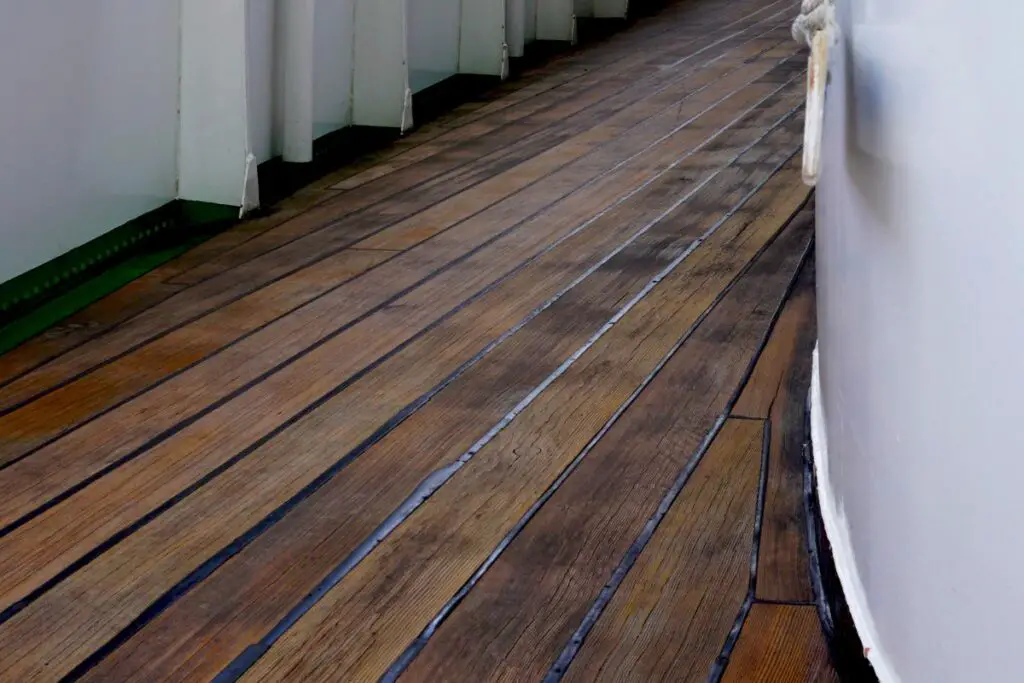Plywood is a popular building material that is commonly used for a variety of projects, from furniture to home construction.
However, when it comes to using plywood in wet or damp environments, one question that often arises is whether plywood is waterproof.
In this article, we will explore the properties of plywood and examine whether or not it is truly waterproof, as well as what factors can impact its water resistance.
Whether you’re a DIY enthusiast or a professional builder, understanding the waterproofing properties of plywood can help you choose the right material for your project and ensure its longevity in wet conditions.
Let’s get started!
What Is Plywood?
Plywood is an engineered wood that is made of thin sheets of wood veneer. These sheets are glued together with layers that are next to one another, with these layers having their grain rotated.
The rotation of the grain can be up to 90 degrees to one another. This type of construction creates a strong and durable sheet of wood that is resistant to warping and cracking.
Plywood is available in various thicknesses, grades, and sizes, making it a versatile material used for a wide range of applications in construction, furniture-making, and other industries.
Plywood can be made from a variety of wood species, including pine, oak, birch, and maple, among others. It can also be treated with different coatings or finishes to enhance its water resistance and durability.
Can Plywood Be Considered Waterproof?
The short answer is no, plywood is not waterproof. While it is true that plywood can withstand some exposure to moisture, it will eventually delaminate and deteriorate when exposed to water for extended periods of time.
This is because plywood is made up of multiple layers of wood veneer that are glued together, and the glue used in the manufacturing process is not completely waterproof.
However, there are some types of plywood that are specifically designed to be more water-resistant than others.
For example, marine-grade plywood is made with waterproof adhesive and is often used for boat building and other marine applications.
Some types of plywood are also treated with water-resistant coatings or finishes to enhance their water resistance.
Generally speaking, it is important to remember that while plywood can withstand some exposure to moisture, it is not a completely waterproof material and should not be relied upon for applications where water exposure is frequent or prolonged.
What Kinds Of Plywood Are More Water-Resistant?

There are several types of plywood that are more water-resistant than standard plywood. Let’s take a look at some of the most common examples.
Marine-Grade Plywood
As the name suggests- and as we mentioned above-, marine-grade plywood is designed for use in marine applications where it will be exposed to water and moisture.
It is made with waterproof adhesive and is often used for boat building, docks, and other applications that require water-resistant plywood.
Exterior-Grade Plywood
Exterior-grade plywood is designed for outdoor use and is treated with water-resistant coatings or finishes to help protect it from moisture.
It is often used for construction projects such as roofs, walls, and subfloors.
Pressure-Treated Plywood
Pressure-treated plywood is treated with chemicals that help protect it from rot and decay caused by moisture and insects.
This kind of plywood is often used for outdoor projects such as decks, fences, and landscaping.
Medium-Density Overlay (MDO) Plywood
MDO plywood is made with a layer of resin-impregnated fiber on the surface that provides a water-resistant barrier.
Medium-density overlay plywood is commonly used for signs, billboards, and other outdoor applications.
It is important to note that even with these types of water-resistant plywood, proper installation, and maintenance are still necessary to ensure their longevity in wet or damp environments.
What Factors Impact The Water Resistance Of Plywood?
There are several factors that can impact the water resistance of plywood, including the following.
Type Of Adhesive
The adhesive used to bond the layers of veneer together can greatly affect the water-resistance of plywood.
Some adhesives, such as phenol-formaldehyde, are more water-resistant than others.
Type Of Wood
Different types of wood have varying levels of natural resistance to water. For example, cedar and redwood are naturally resistant to decay and rot caused by moisture.
Grain Orientation
Plywood is made by layering thin sheets of wood veneer, with the grain of each layer running perpendicular to the layer below it.
The orientation of the grain can affect the strength and water resistance of the plywood.
Treatment And Coating
Plywood can be treated with water-resistant coatings or finishes to help protect it from moisture. These treatments can help improve the water-resistance of the plywood.
Installation And Maintenance
Proper installation and maintenance can also affect the water-resistance of plywood.
For example, plywood used in exterior applications should be properly sealed and maintained to prevent water from seeping into the material and causing damage over time.
In general, the water resistance of plywood is influenced by a combination of these factors, and the type of plywood that is best suited for a particular application will depend on the specific requirements and conditions of that application.
Final Thoughts
Plywood is not inherently waterproof, but it can be made water-resistant through various treatments and coatings.
Marine-grade plywood, exterior-grade plywood, pressure-treated plywood, and medium-density overlay (MDO) plywood are all examples of plywood that are designed to be more water-resistant than standard plywood.
However, even with these types of water-resistant plywood, proper installation, and maintenance are still necessary to ensure their longevity in wet or damp environments.
When selecting plywood for a specific application, it is important to consider the level of water resistance needed and choose a type of plywood that is appropriate for the conditions it will be exposed to.


